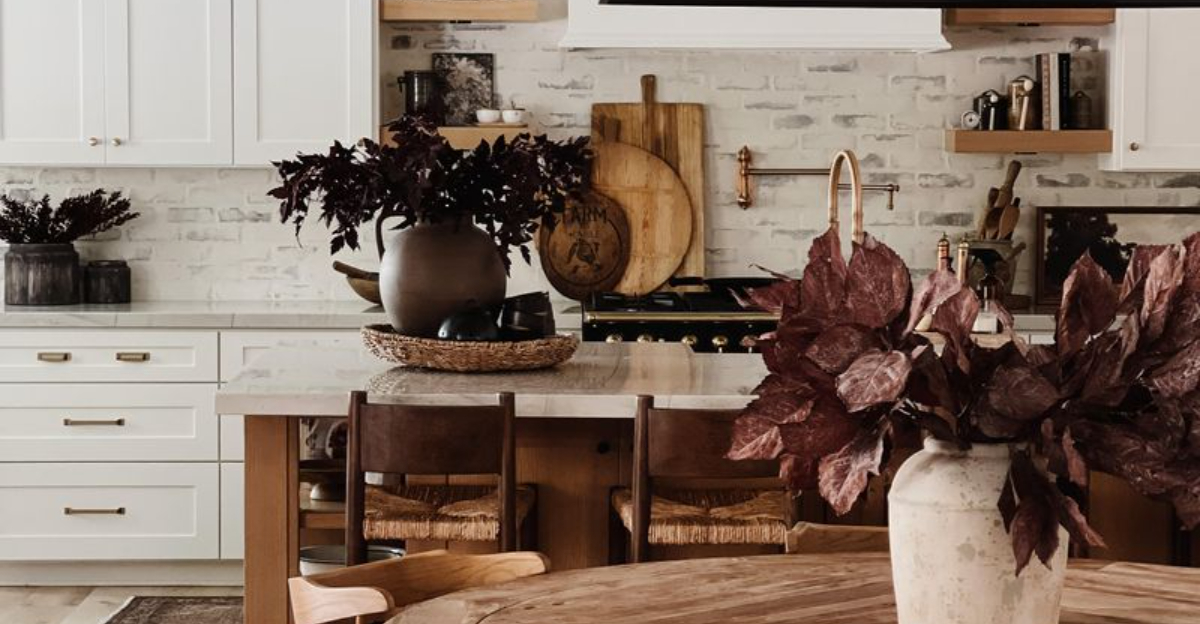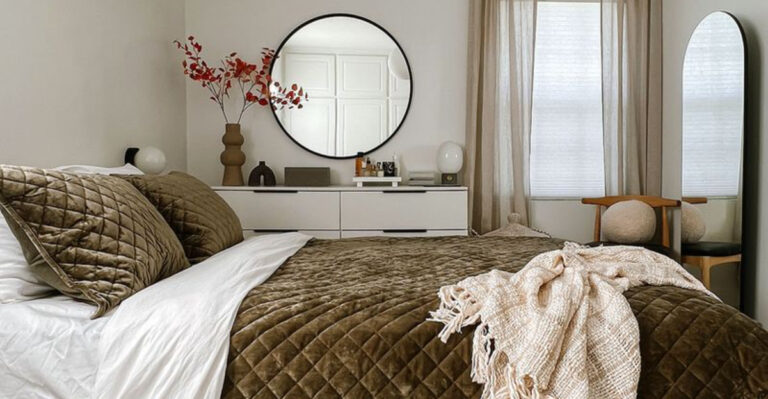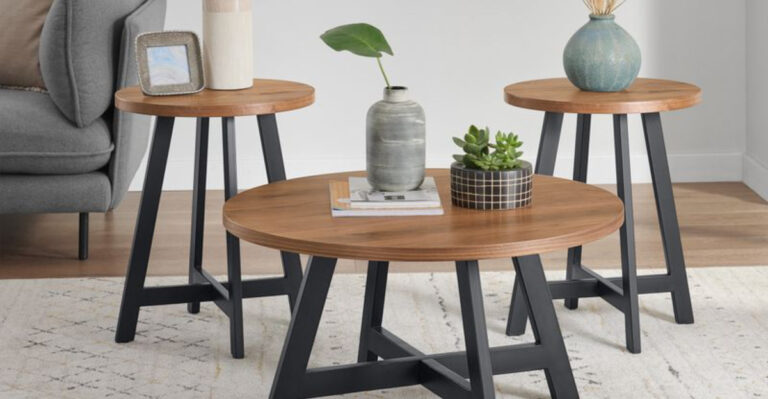15 Home Decor Mistakes That Turn Out Looking Good (Plus 5 Mistakes That Look Even Better)
Who says your home has to be perfect to be amazing? I’ve learned that some of the best rooms come from happy accidents and moments where you break all the traditional decorating rules designers usually swear by.
It’s those little imperfections and unexpected choices that bring personality, warmth, and real life into a space. Honestly, cookie-cutter perfection can feel cold and boring compared to a room that tells a story.
If you’re ready to embrace a bit of chaos and creativity, I’m here to show you how rule-breaking can make your home truly one of a kind.
1. Mixing Too Many Patterns At Once
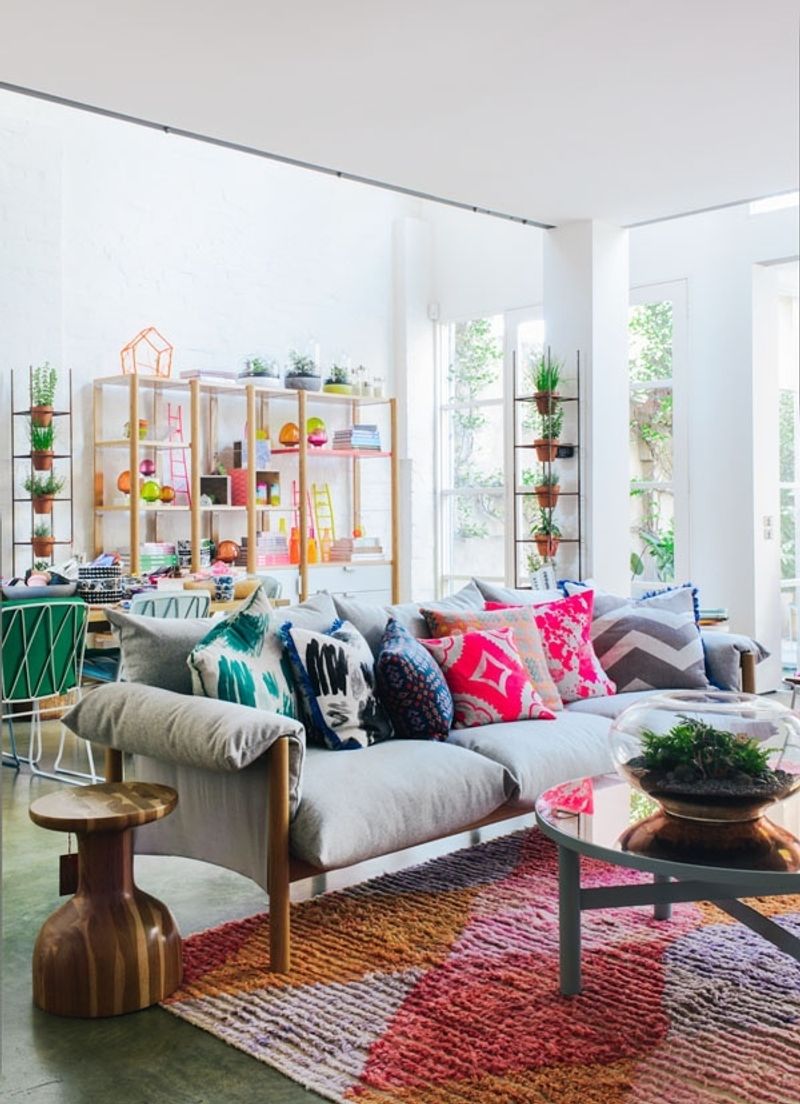
Pattern mixing used to be decorating suicide, but now it creates rooms with serious character. When you throw together florals, stripes, and geometrics, something magical happens.
The key lies in keeping one common color thread running through all your choices. Maybe everything shares a hint of navy blue or warm cream.
Your space ends up looking collected over time rather than bought all at once from a showroom floor.
2. Pushing All Furniture Against The Walls
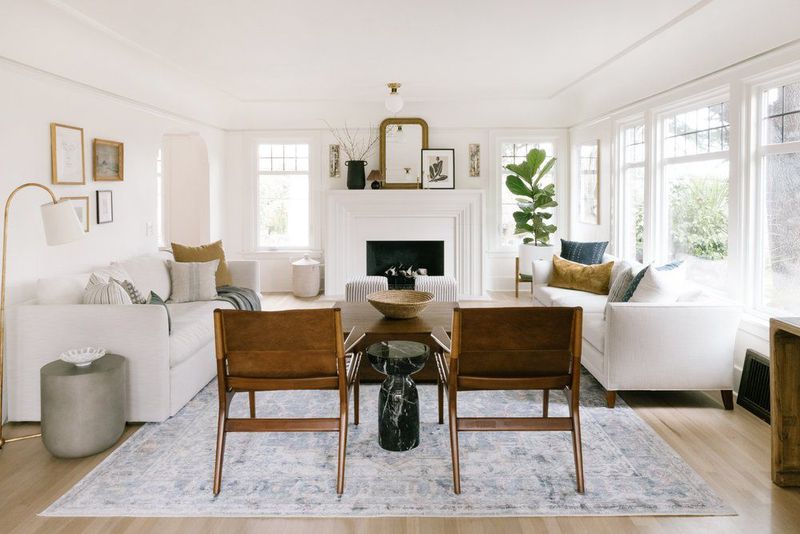
Design experts always preach about floating furniture, but wall-hugging arrangements actually work wonders in smaller spaces. You create a clear pathway through the middle of your room.
This setup makes cleaning underneath furniture a breeze and gives kids plenty of floor space for playing. Plus, it maximizes every square inch you have available.
Sometimes practical beats pretty, and your family will thank you for the extra wiggle room during movie nights.
3. Using Overhead Lighting As Your Main Source
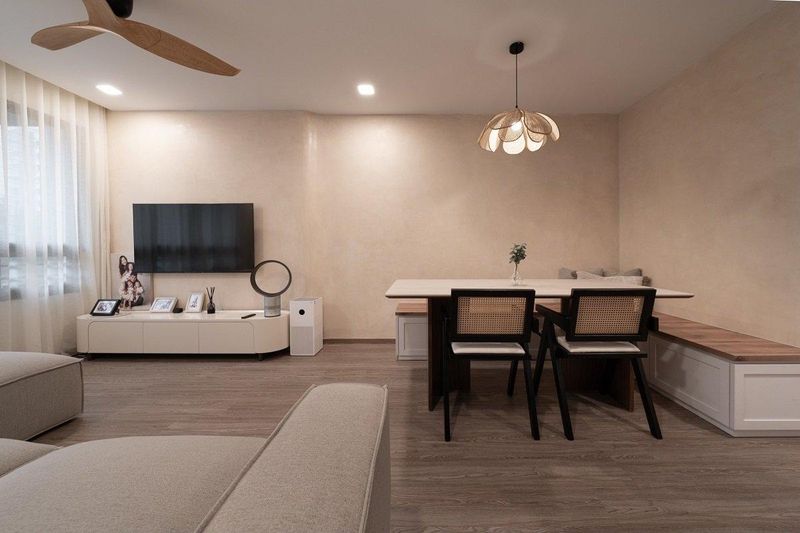
Layered lighting sounds fancy, but overhead fixtures actually provide the most practical illumination for daily life. You can see everything clearly without squinting or bumping into furniture.
Kids doing homework appreciate bright light that reaches every corner of their workspace. Cooking becomes safer when you can actually see what you’re chopping.
Sure, mood lighting has its place, but sometimes you just need to find your keys without playing hide and seek in dim corners.
4. Displaying Collections Instead Of Hiding Them

Minimalists might cringe, but showing off your collections brings personality into sterile spaces. Whether it’s vintage teacups or baseball cards, your treasures tell your story.
Collections create natural conversation starters when guests visit your home. Each piece usually has a memory attached, making your space feel more personal than generic decor.
Group similar items together on shelves or in display cases to create visual impact without looking cluttered or chaotic.
5. Choosing Comfort Over Style In Seating
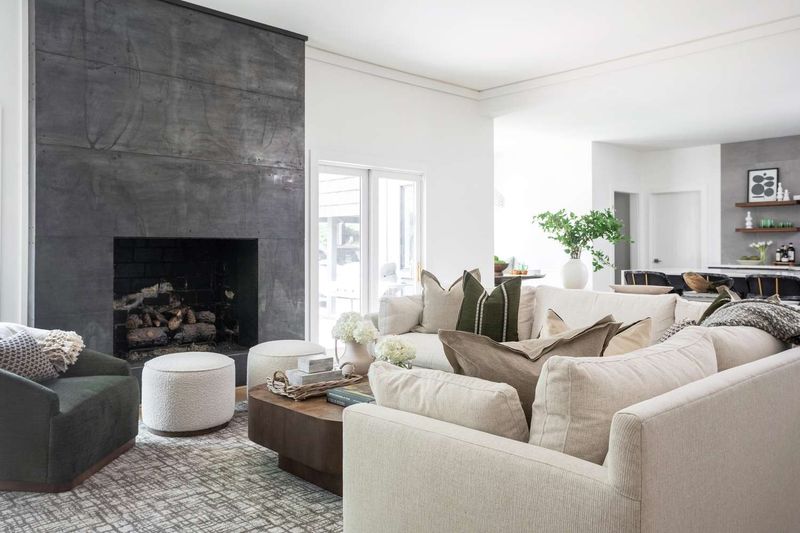
That uncomfortable but gorgeous chair might photograph well, but your back will hate you after an hour of sitting. Comfort wins every time in real life.
Squishy sofas and recliners invite people to actually use your living spaces instead of tiptoeing around them like museum exhibits. Family movie nights require furniture that embraces you back.
Your guests will remember how relaxed they felt in your home long after they forget what your throw pillows looked like.
6. Hanging Art Too Low On The Walls
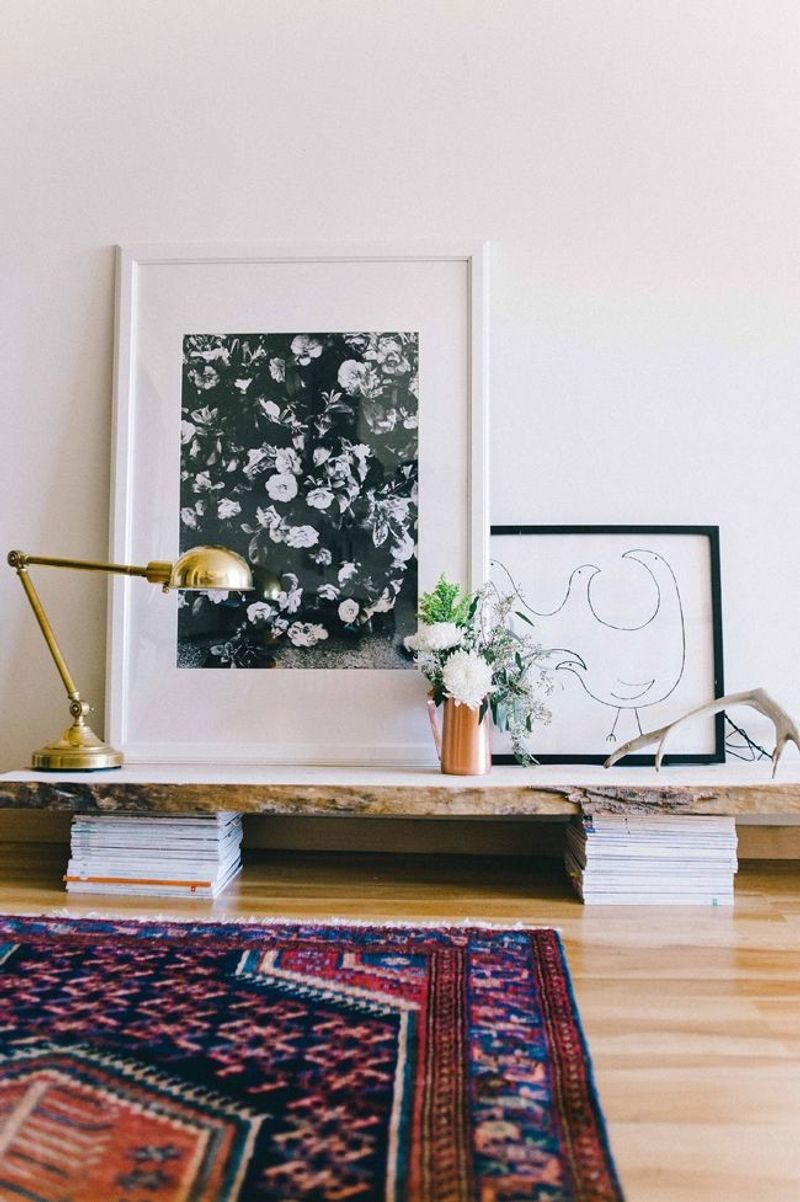
Gallery height sounds professional, but hanging pictures at actual eye level makes them more engaging and accessible. You want to connect with your art, not crane your neck.
Lower placement works especially well in homes with children, letting them enjoy the artwork too. It creates a more intimate, cozy feeling throughout your rooms.
When everyone can comfortably view your favorite pieces, your walls become part of daily conversations rather than distant decorations gathering dust.
7. Keeping Curtains Open All Day Long
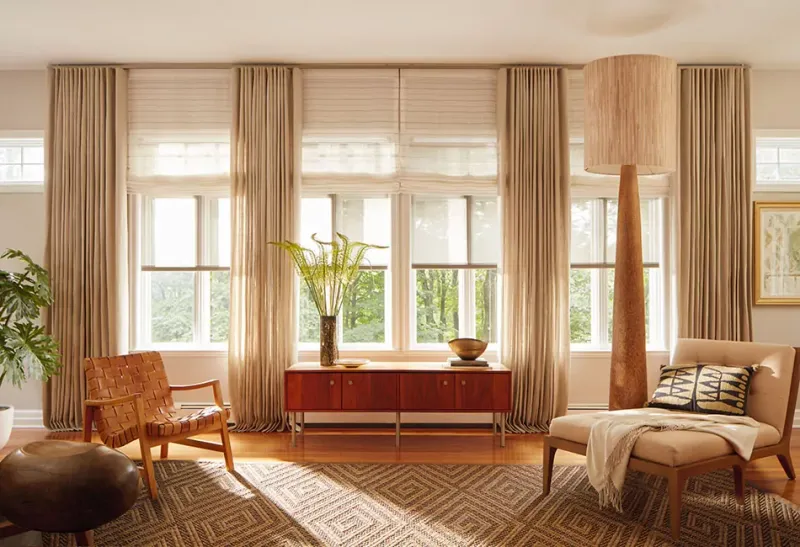
Privacy purists might disagree, but natural light beats any expensive lighting fixture you could install. Open curtains flood your rooms with free, mood-boosting sunshine.
Plants thrive near bright windows, and your electric bill stays lower when you rely on daylight. Morning coffee tastes better when you can watch the world wake up outside.
If privacy concerns you, try sheer panels that filter light while maintaining some coverage during peak hours.
8. Mixing Metals Throughout Your Home

Matchy-matchy metals look showroom perfect but lack the layered richness that mixed finishes provide. Real homes accumulate pieces over time, creating natural metal variety.
Brass cabinet pulls can live happily with stainless appliances and copper light fixtures. The contrast adds visual texture and prevents your space from feeling too coordinated.
Just keep the ratio balanced, with one metal dominating while others play supporting roles throughout your room design.
9. Using Bright White Paint Everywhere

Color consultants push warm whites, but stark white creates the ultimate blank canvas for your life to unfold. It reflects maximum light and makes small spaces feel larger.
White walls never compete with your furniture, artwork, or seasonal decorations. You can change your room’s personality with different accessories without repainting.
Plus, white paint costs less than custom colors, and touch-ups become simple when you keep extra paint on hand for quick fixes.
10. Arranging Furniture For TV Viewing
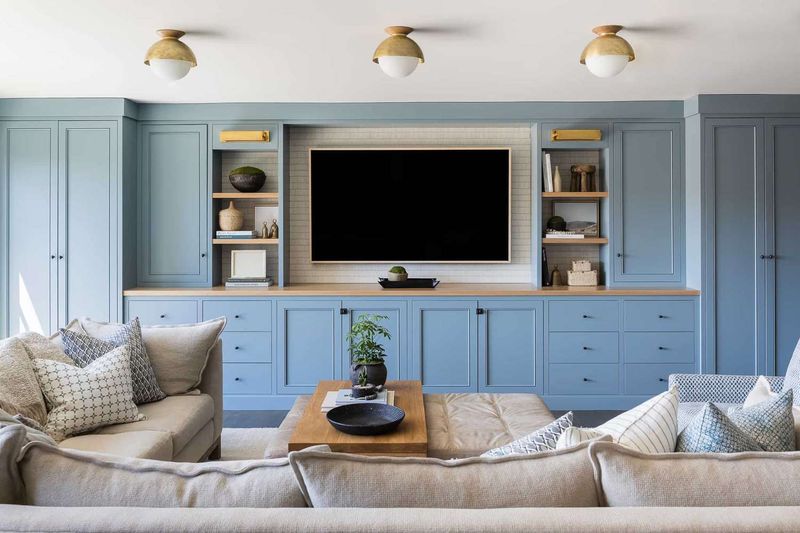
Interior designers prefer conversation-focused layouts, but most families actually gather around screens for entertainment and bonding time. Why fight against how you really live?
Positioning your sofa facing the television creates a natural gathering spot for movie nights, sports games, and binge-watching sessions with loved ones.
You can still add side chairs for conversation while maintaining the room’s primary function as your family’s entertainment headquarters.
11. Filling Every Wall With Something

Negative space might be trendy, but filled walls create cozy, collected-over-time charm that makes houses feel like homes. Your walls become a visual autobiography.
Every family photo, piece of art, and meaningful object contributes to your space’s story. Kids love pointing out different pictures and asking about the memories behind them.
Just group similar items together and maintain some visual balance to prevent the look from becoming overwhelming or chaotic.
12. Choosing Function Over Form In Storage

Beautiful storage solutions often sacrifice practicality for appearance, but functional organization systems actually serve your family better long-term. You need storage that works, not just looks pretty.
Wire baskets, plastic bins, and simple hooks might not photograph well for magazines, but they handle daily life’s chaos effectively.
When your storage actually stores things efficiently, your home stays tidier and more peaceful for everyone who lives there.
13. Using Rugs That Are Too Small
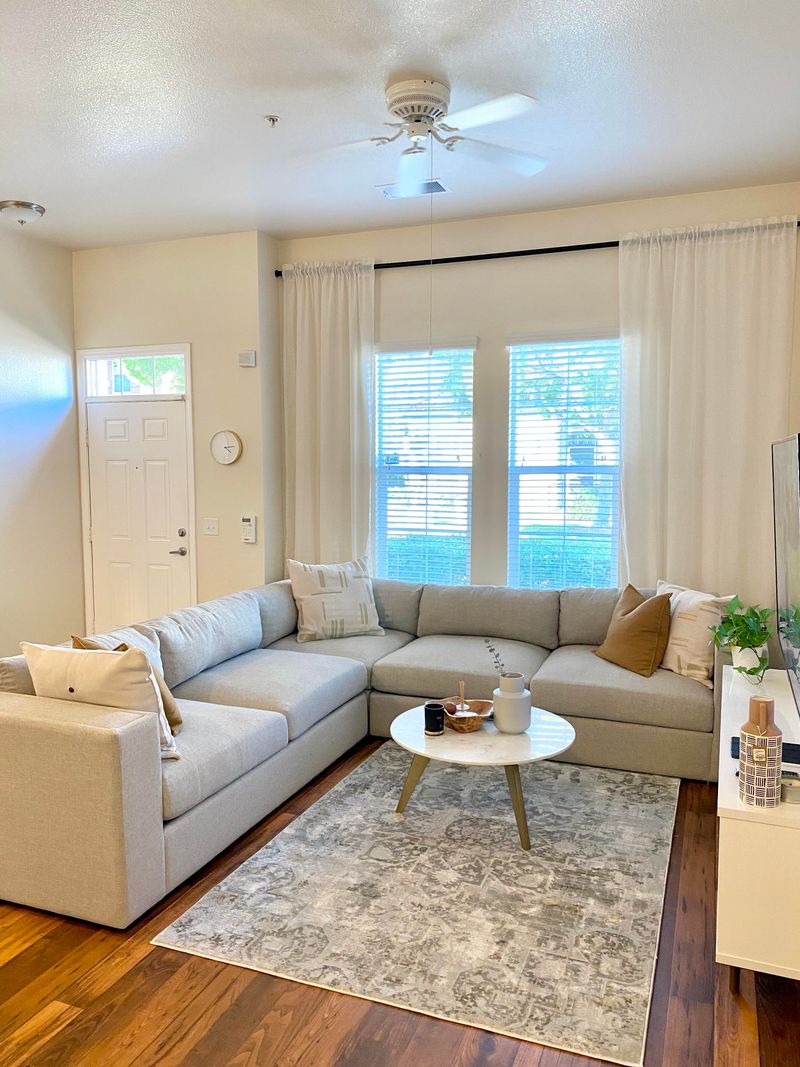
Design rules demand large rugs that anchor entire seating areas, but smaller rugs actually define specific zones within open floor plans. They create intimate conversation spots.
Smaller rugs cost significantly less and become easier to clean or replace when life happens. Spills and pet accidents feel less catastrophic on budget-friendly pieces.
You can layer different small rugs to create visual interest or easily rearrange them when you want to refresh your space without major investment.
14. Keeping Books In Stacks Instead Of Shelves
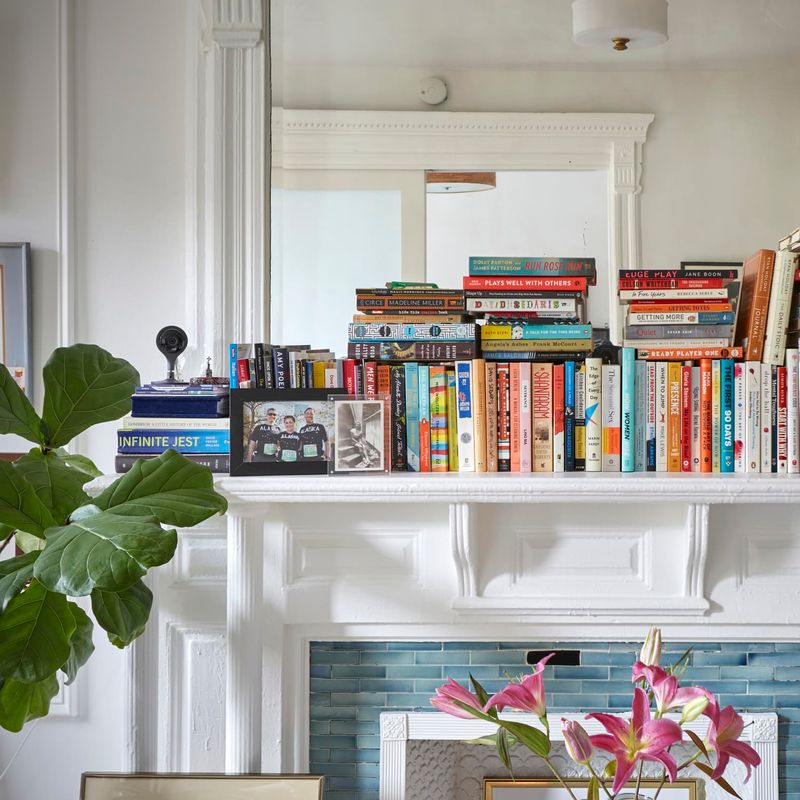
Perfectly organized bookshelves look magazine-ready, but book stacks create casual, lived-in charm that invites browsing and reading. They suggest a home where literature actually gets enjoyed.
Stacked books become natural side tables for coffee cups and reading glasses. You can easily grab whatever catches your eye without formal library procedures.
Different height stacks add visual texture to rooms while keeping your favorite titles within arm’s reach for spontaneous reading sessions.
15. Decorating With Personal Photos Everywhere
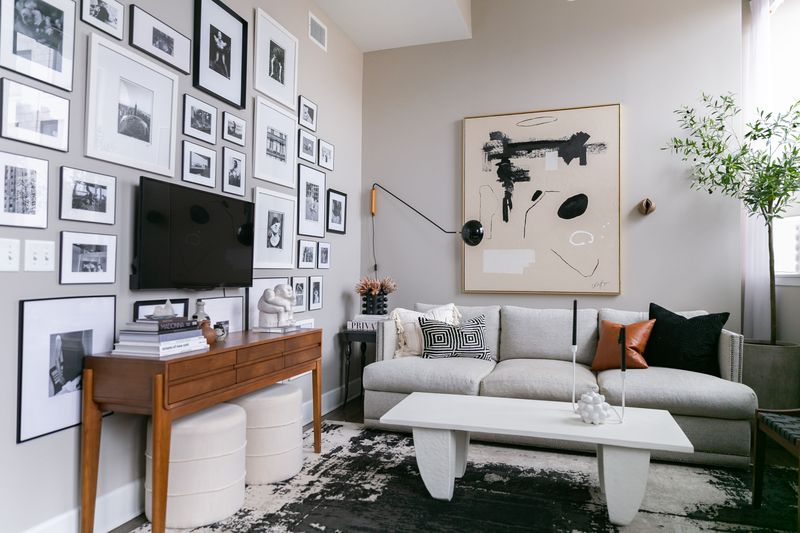
Minimalist mantras suggest limiting personal photos, but surrounding yourself with loved ones’ faces creates the warmest, most welcoming atmosphere possible. Your home should celebrate your people.
Family photos spark conversations with guests and remind you daily of precious memories and relationships. Children especially love seeing themselves featured prominently in their home.
Mix different frame sizes and styles to create visual interest while maintaining the personal, family-focused feeling throughout your living spaces.
16. Pushing Dining Tables Against Walls
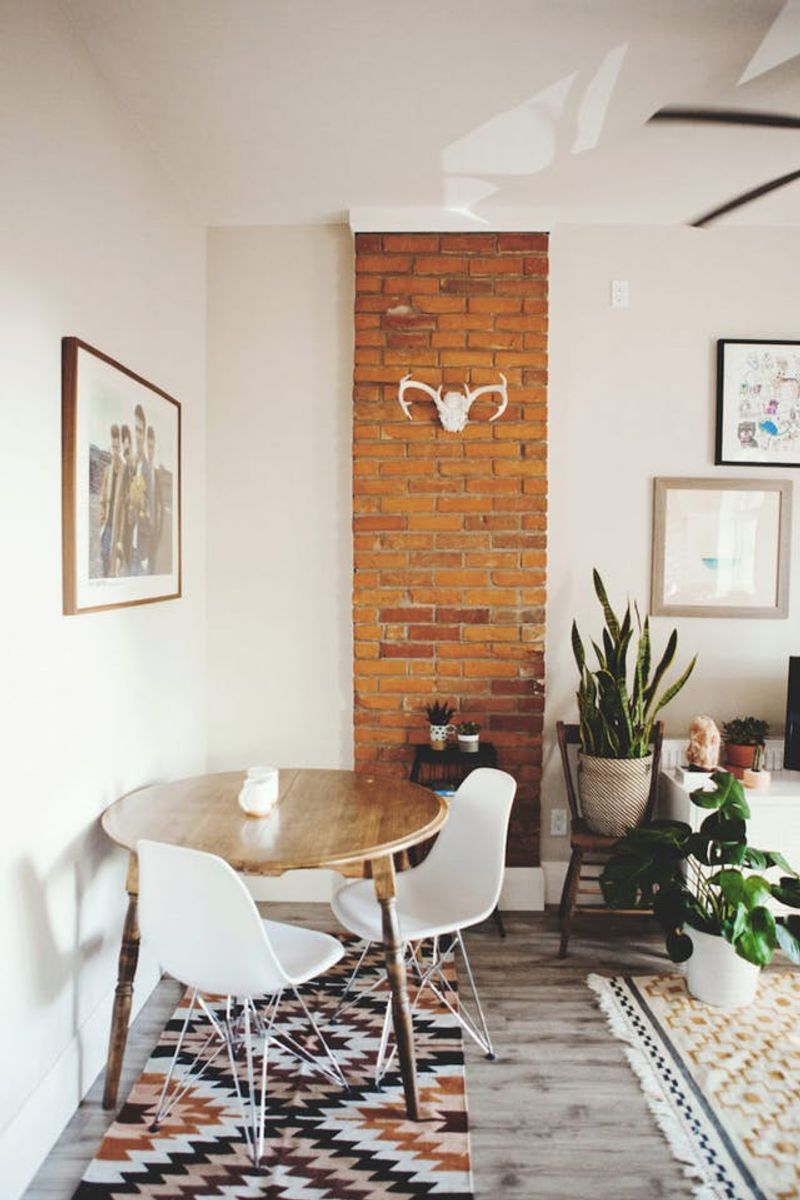
Centered dining tables look formal, but wall placement maximizes precious floor space in smaller homes. You gain an entire walkway through your dining area.
Wall-positioned tables work perfectly for everyday family meals while still accommodating guests when needed. Kids can easily slide in and out without navigating tight spaces.
This arrangement also creates opportunities to use the wall for additional storage or display space above your dining area.
17. Mixing Different Wood Tones Together
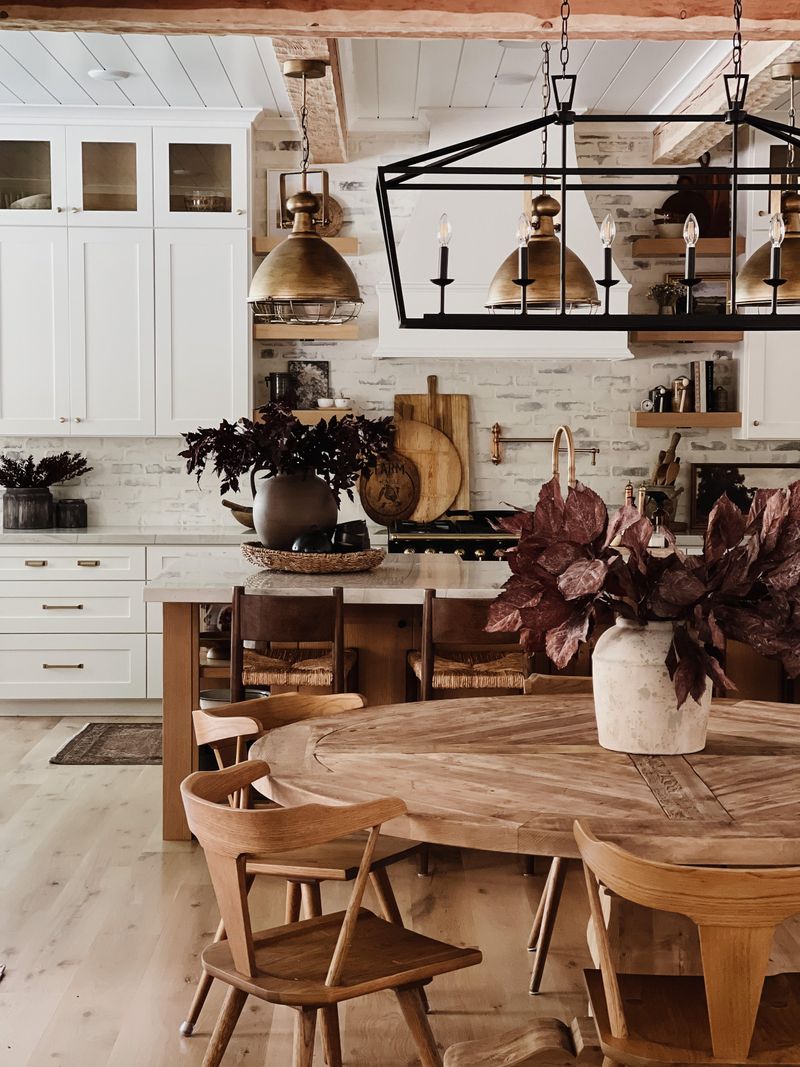
Matching wood finishes throughout your home creates an artificial, showroom appearance that lacks the organic warmth of naturally collected pieces. Real homes accumulate furniture over time.
Different wood tones add richness and depth to your rooms while reflecting your family’s history and preferences. Each piece tells its own story.
The variety prevents your space from feeling too coordinated or sterile, creating a more relaxed, lived-in atmosphere that welcomes everyone.
18. Using Overhead Storage In Every Room

Floor space costs premium dollars, but ceiling height offers free storage real estate that most people ignore completely. Why not use every available inch?
High shelves work perfectly for seasonal items, books, and decorative pieces you want visible but not necessarily accessible daily. They draw the eye upward, making rooms feel taller.
Just ensure you have a sturdy step stool nearby and avoid storing heavy items that could become dangerous if they fall.
19. Creating Gallery Walls With Random Spacing
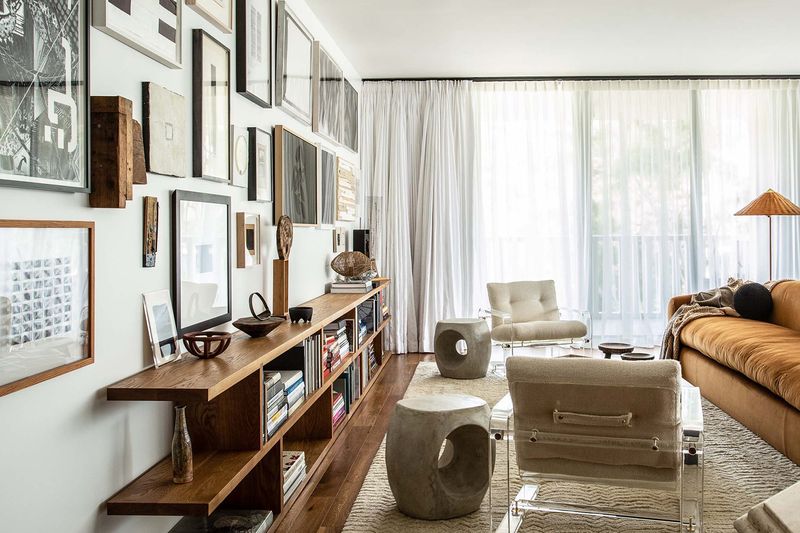
Perfect grid patterns look calculated and cold, but organic spacing creates gallery walls that appear to have grown naturally over time. They feel more personal and less staged.
Random placement allows you to add new pieces whenever you find them without reorganizing your entire display. Your wall becomes a living, evolving collection.
The varied spacing also accommodates different frame sizes and artwork dimensions without forcing everything into rigid, uniform arrangements that limit your choices.
20. Leaving Some Walls Completely Bare
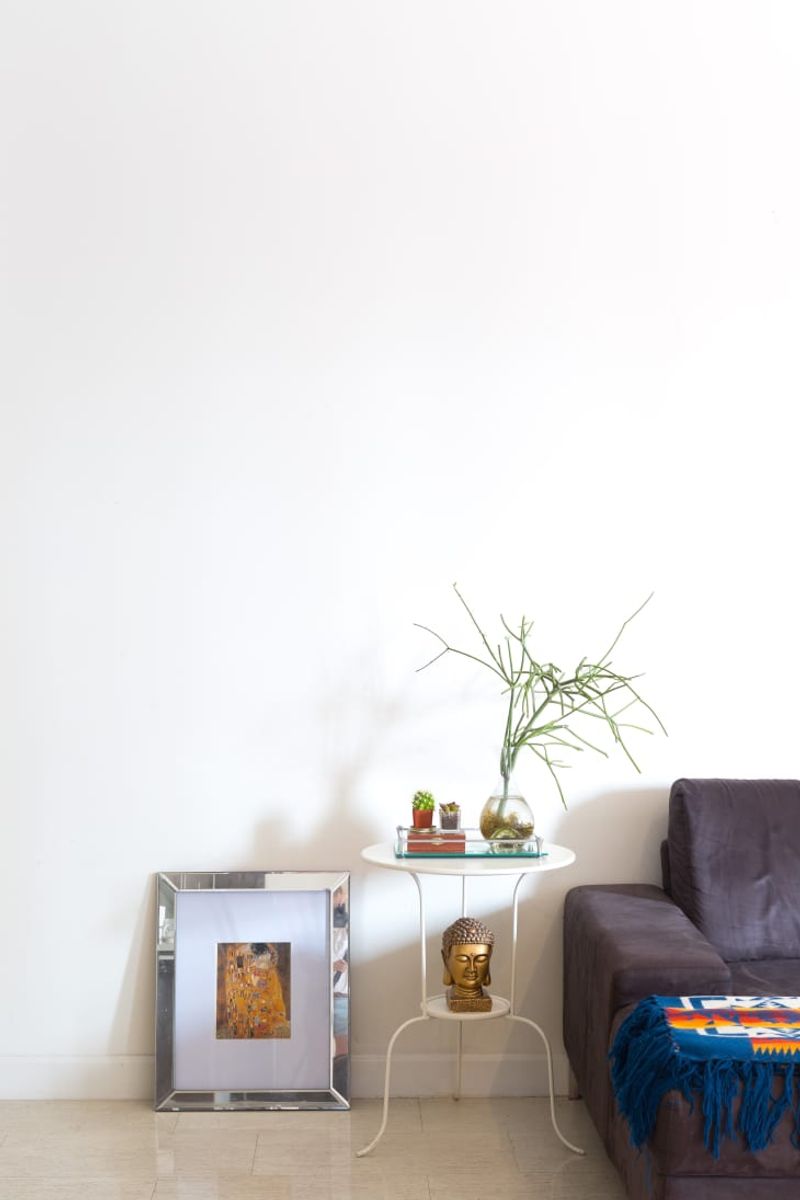
Maximalist trends push wall coverage, but strategic bare walls provide visual breathing room that prevents your home from feeling overwhelming or cluttered. Sometimes less really means more.
Empty walls highlight and enhance the decorated areas by creating contrast and focus. Your eye needs places to rest between visual elements.
Bare walls also offer flexibility for future additions without requiring major rearrangements of existing displays or decorative elements throughout your home.

